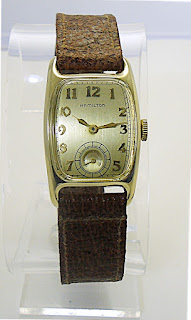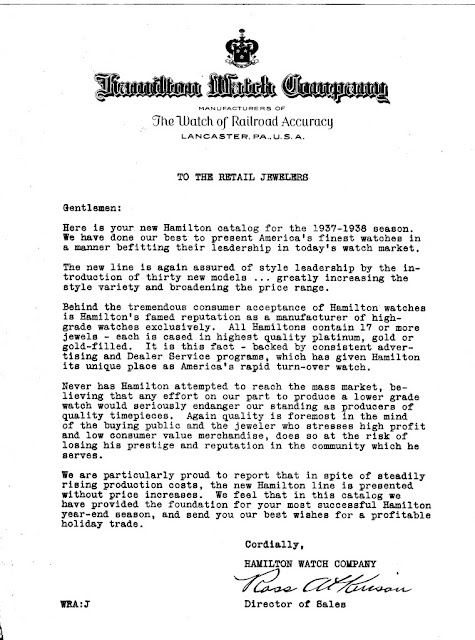In 1936, the Franklin D. Roosevelt administration published economic information that indicated the country had regained levels of employment similar to those of the late 1920’s prosperity. What would one expect during an election year?
With all of Roosevelt’s hype, during his fireside chats, what would a company like Hamilton do?
Hamilton toyed with the idea of entering the market with lower quality watches, something along the lines lower cost watches, but with the Hamilton logo. Think of it as Hamilton’s way of getting their feet wet.
The Marketing Group fabricated a number of watches using 10 karat gold, lower quality movements, and cases. This watch is a remnant of Hamilton’s test balloons.
Ultimately, the company decided to go with other 10 karat watches and 987A movements instead of their premier 980 and 982 caliber watches.
Adding Insult to Injury
The government did not mention employment when publishing its financial reports. Unemployment actually remained high.
The year 1936, began with a quiet prelude to a major recession that peaked in 1937. The American economy unexpectedly fell again, lasting through most of 1938. Production declined, as did profits and employment.
The Hamilton marketing group produced numerous prototypes for the mass market. Again, they used 10K Star company cases instead of the usual 14K Wadsworth. Ultimately, Hamilton did release a line of cheap watches with their older movements.
They decided to leave the 980 and 982 line alone. The company made this watch for possible inclusion in the lower cost or mass market product line. It has a 10K Star case, brushed steel dial, and a 980 movement. It does not have a butler finished dial their customers were used to seeing in their higher-quality watches.
Think of this like you would Depression-era glass. You know the glass that came in cereal boxes? This watch sat in a vault for almost 90 years.
Search eBay for Depression Era Watches
Copyright 2006-2017 | All Rights Reserved



